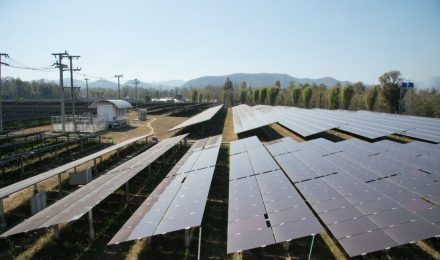Industries everywhere are going through massive changes thanks to the continued rise in use of artificial intelligence. AI is allowing every field access to innovative solutions to modern problems. The renewable energy sector is no different and has also seen drastic changes in efficiency and sustainability. In this article, we’ll cover everything you need to know about the impact of AI on renewable energy management.
How AI Impacts Renewable Energy
The introduction of AI into the green energy sector has created many interesting and innovative opportunities. The biggest of these, however, is AI’s ability to enhance both productivity and efficiency. It’s no surprise that Artificial Intelligence completely outclasses most people when it comes to numbers. However, this also means that AI can quickly analyze the data given and find the optimal solution to complex situations such as grid management. Not only that, AI can also be used to help predict energy demand as well as to optimize its usage.
Despite all of these major advantages, however, AI cannot replace actual living beings. Unexpected situations may arise which require human hands to solve. Likewise, AI isn’t immune from making mistakes. An experienced and skilled employee or technician in vital in making sure that the results are accurate. What actually makes AI powerful, however, is in its ability to work alongside its human counterparts in order to help find opportunities.
The Main Benefits of AI in Renewable Energy Management
Finding Prime Locations For Expansion
One of the most difficult aspects of this sector is managing expansion. Finding locations that are not only suitable for the project, but also profitable is an extremely difficult task. AI, however, can easily shift through large amount of satellite and sensor data in order to find the perfect location. It can take into account weather and land use as well as the availability of resources. To top it off, it can also help optimize the arrangement of green energy setups to maximize the output.
Efficient Energy Production
Reducing the environmental impact of any sort of energy-intensive system is important. Doing so, however, also requires that energy production be efficient. With artificial intelligence, power plants can be regulated resulting in greater levels of both performance and sustainability. Likewise, vehicle use can also be optimized thanks to AI being able to determine the best routes. In the case of electric vehicles, energy consumption and charging schedules can also be managed for better use of electricity.
Stronger Waste Management
Waste management is a key component of any energy setup in this industry. It’s also one in which artificial intelligence can show a clear advantage over humans. One of the most common uses of AI in this sector is by forecasting the expected duration of a renewable energy setup as well as aiding in the scheduling of their dismantling and reuse. The recycling procedure of solar panels and wind turbines, for example, can be tightly tuned to maximize the expected result.
Reduced Emissions. Greater Performance.
One of the best ways of reducing carbon emissions is by matching the energy demand of a specific location. The value of AI is especially apparent here as it can precisely match these needs. As it can also forecast sunny or windy days, this means that it can also take into account an abundant amount of future renewable energy thus further improving efficiency and lowering the carbon footprint. Better still, all of this can be done while still optimizing production leading to even greater performance.
Smart Energy Storage
Energy storage will see a massive boost in the next few years. AI is also a highly important key aspect of this growth. Smart energy storage systems, for example, can be easily added to the energy grid to create a streamlined energy production chain. On top of this, the advent of virtual power plants are further empowered thanks to the use of smart systems. This innovative use of AI allows for energy providers to provide power when required without having to create new power plants. This means that supply shortfalls can be easily avoided while still allowing providers with the ability to provide the needed amount of energy without issue.
The Impact of AI in Wind and Solar Sectors
Although the impact of AI can be seen throughout the renewable energy industry, AI advances in the wind and solar sectors have grown much more extensively that those in other areas. These applications serve as the perfect showcase of how AI is changing the entire industry.
Wind Energy
One of the most difficult aspects of wind energy production is dealing with weather-related issues. Modern AI innovations, however, have been able to consistently predict wind turbine power generation with astonishing accuracy. Although these predictions only account for a few days at the most, it’s still a massive step forward in the wind energy sector.
Solar Energy
When it comes to solar energy, AI improvements here are easily the most impressive. Just like with wind production, weather is one of the key detriments of solar energy production. However, predicting solar energy production is a lot more complicated with many potential problems to solve. Watt-Sun, a joint AI project by the US Department of Energy and IBM, has enhanced the accuracy of forecasting by nearly 30%. These accurate results make it much easier to deal with energy grid supply planning which is a crucial step for any sort of solar energy operations.
A Growing Impact
Artificial Intelligence has created an impact in many industries. Few of these industries, however, have been as greatly impacted as renewable energy management. From being able to pin-down the best locations for expansion to highly-optimized energy production, AI is creating a new frontier of green energy exploration. As great as this impact already is, however, it will only continue to grow in the future as the use of AI becomes even more commonplace.



